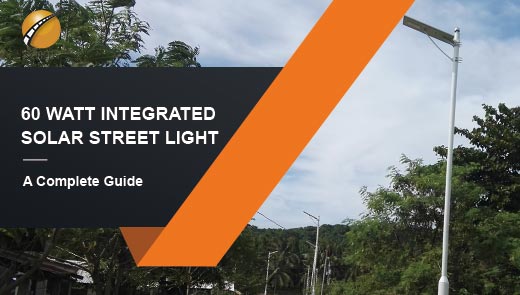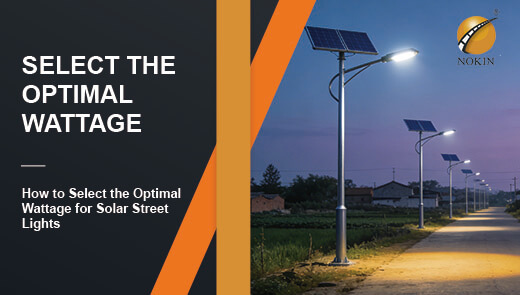How Is The Color Temperature Of The Street Light Selected?
As an important facility for urban night lighting, the selection of the color temperature of street lights not only affects the lighting effect, but also is closely related to many aspects such as traffic safety, energy consumption and environmental atmosphere. Correctly selecting the color temperature of streetlights can make the lighting system meet the functional requirements and at the same time, play out the best comprehensive benefits. This paper will focus on the street light color temperature, starting from the basic concept of color temperature, introduce the value range of different color temperatures, analyze the importance of color temperature selection, explore the impact of solar street light color temperature on visibility, as well as most of the solar street lamps using cold white light, for the street light color temperature selection to provide a comprehensive reference.
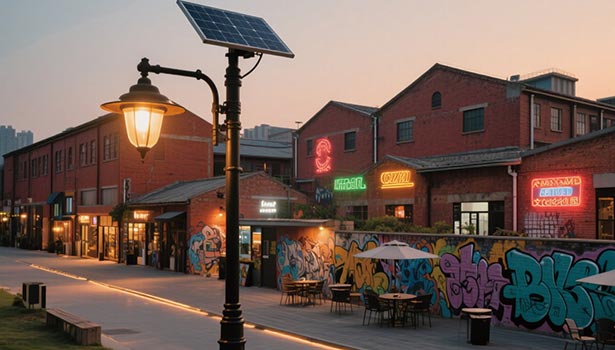
Understanding Color Temperature
Definition of Color Temperature
Although the term color temperature has temperature in it and its unit is Kelvin (K)-a thermodynamic temperature unit, color temperature does not mean how much heat is emitted by the LED lamp. color temperature does not indicate how much heat an LED lamp emits. It actually describes the color quality of the white light emitted by the lamp. It is important to note that color temperature only applies to white light, not colored light such as red, blue, or green.
Labeling Instructions for Color Temperature
White light is often labeled as “warm light,” “natural light (or neutral light),” "cool light “ or ”daylight (also known as cool white light)." Warm white light has an amber texture; cool white light appears more bluish; natural or neutral light is neither amber nor bluish, giving it a pure “white” feel. Cool white light is closer to actual sunlight, which is why it is called “daylight white”.
Numerical Classification of Color Temperature
Relationship between Kelvin Number and Warmth or Coolness of Light
The lower the Kelvin number, the warmer the light; the higher the number, the cooler the light. For example, a light source with a color temperature of 2700K emits a warm, pleasant light, while a light source with a color temperature of 6500K emits a bright, exciting light. A light source with a color temperature of 2400K will appear much warmer than a light source with a color temperature of 6000K.
Different Color Temperature Ranges and Types
|
Color Temperature Range |
Type |
|
2700K–3000K |
Warm White Light |
|
3500K–4400K |
Natural / Neutral Light |
|
5000K–6500K |
Cool White Light |
Why Color Temperature Matters
Visibility and Safety
The primary purpose of outdoor lighting is to provide safety, security and clear visibility. Due to its high brightness and strong contrast, cool white light allows drivers to quickly identify pedestrians, obstacles and traffic markings in safety-sensitive areas such as main roads, intersections and school surroundings with high traffic flow, reducing the risk of accidents at night.
Neutral white light in commercial streets and residential roads, the light is soft and not harsh, which is convenient for residents to travel at night, but also makes the store window display clearer, balancing the functionality and comfort. Warm white light is suitable for low-traffic areas such as park trails and neighborhood recreation areas, where the soft light creates a peaceful atmosphere without disturbing the rest of the surrounding residents and highlights the natural beauty of the greenery.
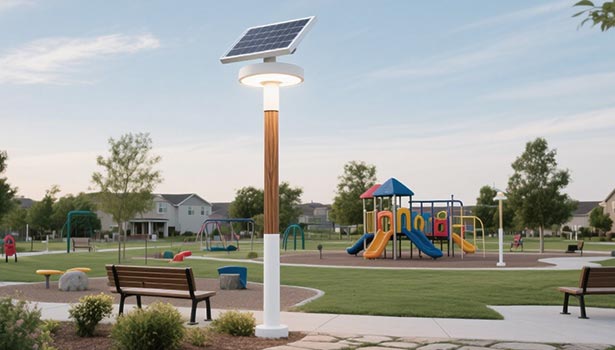
Energy Efficiency
Solar Street Lights utilize LED technology, which is extremely energy efficient compared to traditional lighting systems. While cool white light requires more energy to produce high brightness, solar LEDs, through intelligent light control technology and highly efficient storage batteries, can store more power when there is sufficient light and automatically adjust the brightness at night according to the environment, reducing energy consumption while ensuring the lighting effect.
For example, in the late night when the traffic flow is reduced, the cold white light solar street light will automatically reduce the power, which not only saves energy but also prolongs the service life of the battery, which is perfectly adapted to the characteristics of solar power supply and realizes the win-win situation of energy saving and performance.
Aesthetic Appeal
Color temperature can also set the tone for an area. Warm white light in Chinese gardens, retro-style commercial streets and other areas, can echo the color tone of ancient buildings, creating a warm and elegant atmosphere, so that the night landscape has a more historical flavor, attracting tourists to stop. Neutral white light in the modern city plaza, pedestrian streets and other areas, can truly restore the original appearance of the building, sculpture, so that the city night scene more neat and bright, in line with modern aesthetic needs. And cold white light in industrial parks, logistics parks and other areas, with its high-definition lighting effect, not only to meet the safety needs of night operations, but also highlights the region's efficient, professional qualities.
How Does Solar Street Light Color Temperature Affect Visibility?
Driver Safety and Road Recognition
Color temperature has a significant effect on driver visibility and reaction time under solar street light illumination. Studies have shown that cool white light performs better than warmer light for contrast recognition of road surfaces, lane markings and potential hazards. Solar street light systems with this optimal range of color temperatures allow drivers to distinguish between different objects more effectively, especially in adverse weather conditions where visibility is already impaired. The enhanced contrast provided by the right choice of color temperature reduces accident rates and improves overall road safety.
Pedestrian and Cyclist Detection
Detection of pedestrians and cyclists is critical to the effectiveness of solar streetlights in mixed-use areas. Cool white solar streetlight systems better render the colors of clothing and reflective materials, making pedestrians more visible to drivers. This improved detection capability is especially important at intersections and crosswalks, where solar streetlights must be arranged to accommodate multiple user groups. The choice of color temperature directly affects the effectiveness of face recognition and body motion detection under solar street lighting, which in turn affects security surveillance and general pedestrian safety.
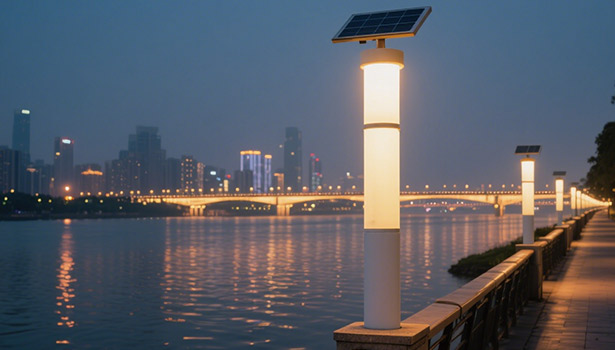
Weather Performance and Atmospheric Penetration
Different color temperatures perform differently in various weather conditions, which must be taken into account in the design of solar street light systems. Cool white light tends to be more effective than warm white light in penetrating fog and light precipitation, maintaining visibility during severe weather events. In areas with frequent fog or winter precipitation, selecting a higher color temperature for solar street lighting systems can help maintain adequate lighting levels. This weather performance factor is especially important in places where atmospheric conditions change rapidly, such as coastal areas or mountainous regions.
Why Do Most Solar Street Lights Use Cool White Color Temperature?
Manufacturing Standards and Industry Practices
The solar streetlight industry has largely standardized around cool white color temperatures (4000K-6500K) as a result of a combination of factors, including regulatory requirements, energy efficiency standards, and proven performance data.
Most solar streetlight manufacturers design their products to meet international lighting standards that specify minimum illumination levels and uniformity requirements that are easier to meet with cool white LEDs. This standardization creates economies of scale in solar streetlight production, making cool white options more readily available and cost-effective for large-scale installations.
Municipal Preferences and Regulatory Compliance
Government agencies and municipalities often specify cool white color temperatures for solar streetlight projects based on established safety standards and energy efficiency regulations. These preferences are based on numerous studies that have shown that cool white solar streetlight systems provide optimal visibility for traffic safety while minimizing energy consumption from limited battery resources.
In addition, many solar streetlight installations must comply with dark sky regulations that favor specific color temperature ranges to reduce the impact of light pollution on astronomical observations and wildlife behavior.
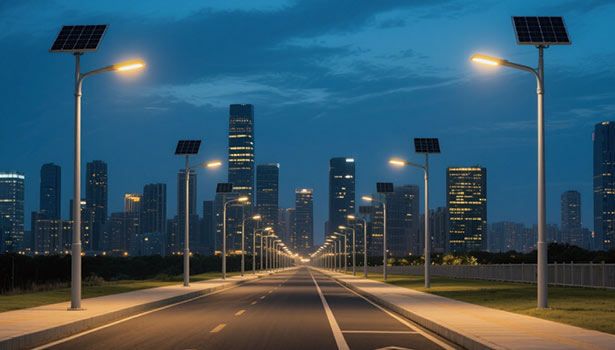
Cost-Effectiveness and Maintenance Benefits
Cool white LEDs used in solar streetlight systems typically have a longer lifespan and more consistent light output than other color temperature options. This longevity advantage reduces the replacement cost and maintenance frequency of solar streetlight installations, making them more economically attractive for long-term urban planning projects. The widespread adoption of cool white technology in solar streetlight applications is also driving component standardization, ensuring better availability of replacement parts and technical support throughout the life of the system.
The choice of color temperature for streetlights is an important decision that requires a combination of factors. From the basic concept of color temperature, the range of values, to its impact on visibility, energy efficiency, aesthetic effect, to the reasons why solar street lights prefer cool white light, each aspect plays a key role in the final choice. In practical application, the color temperature of street light should be reasonably selected according to specific usage scenarios, functional requirements and relevant regulatory requirements, in order to achieve the best balance of lighting effect, safety and security, and economic benefits.

